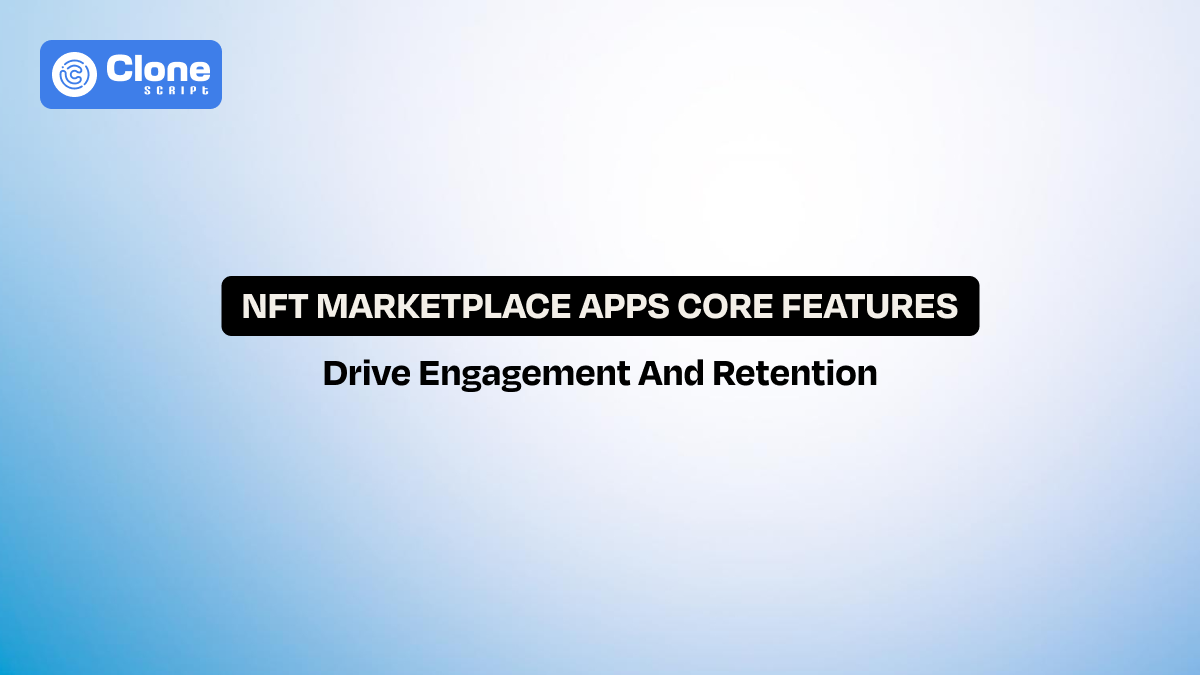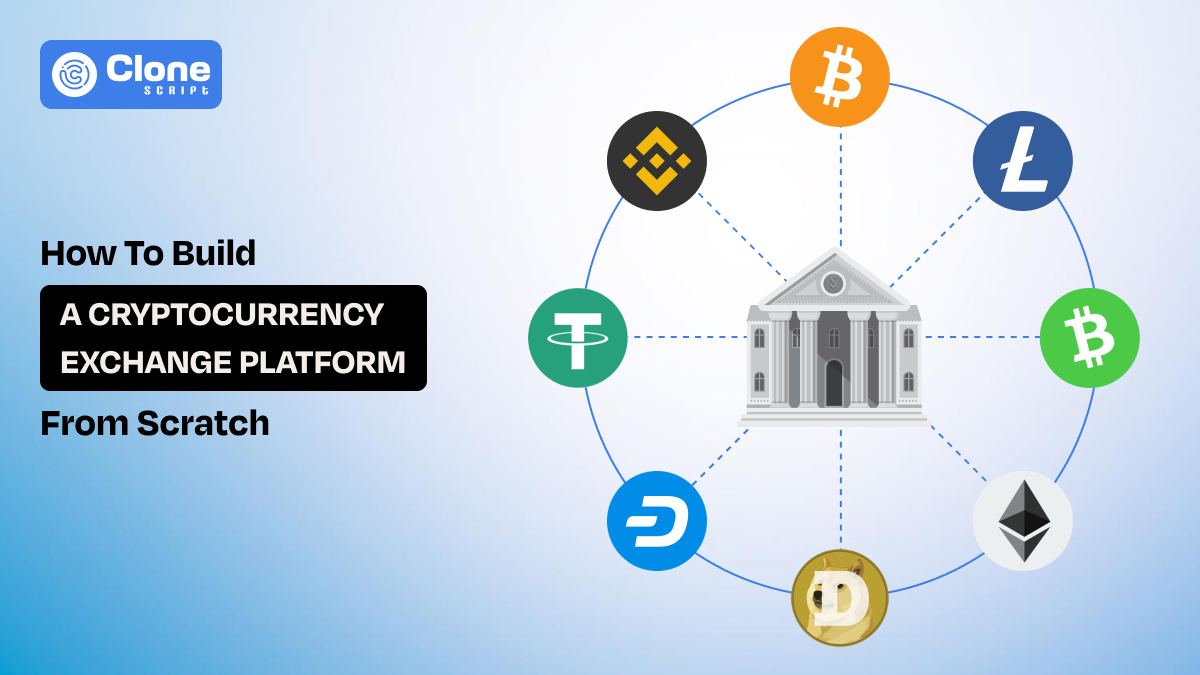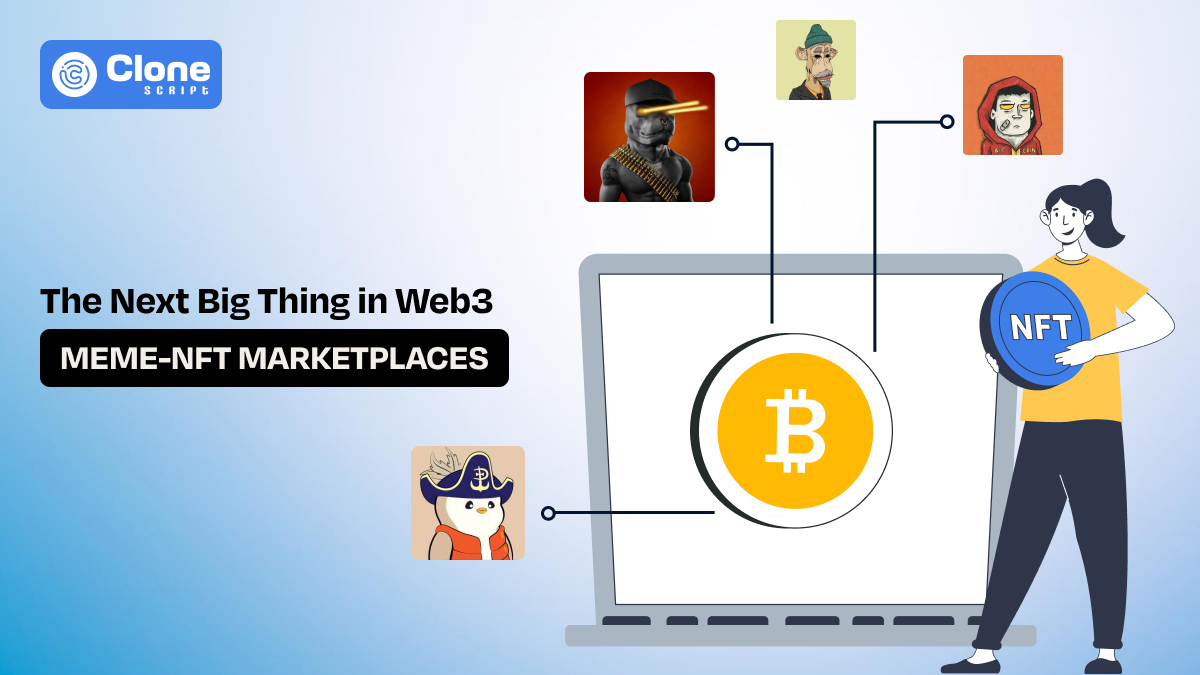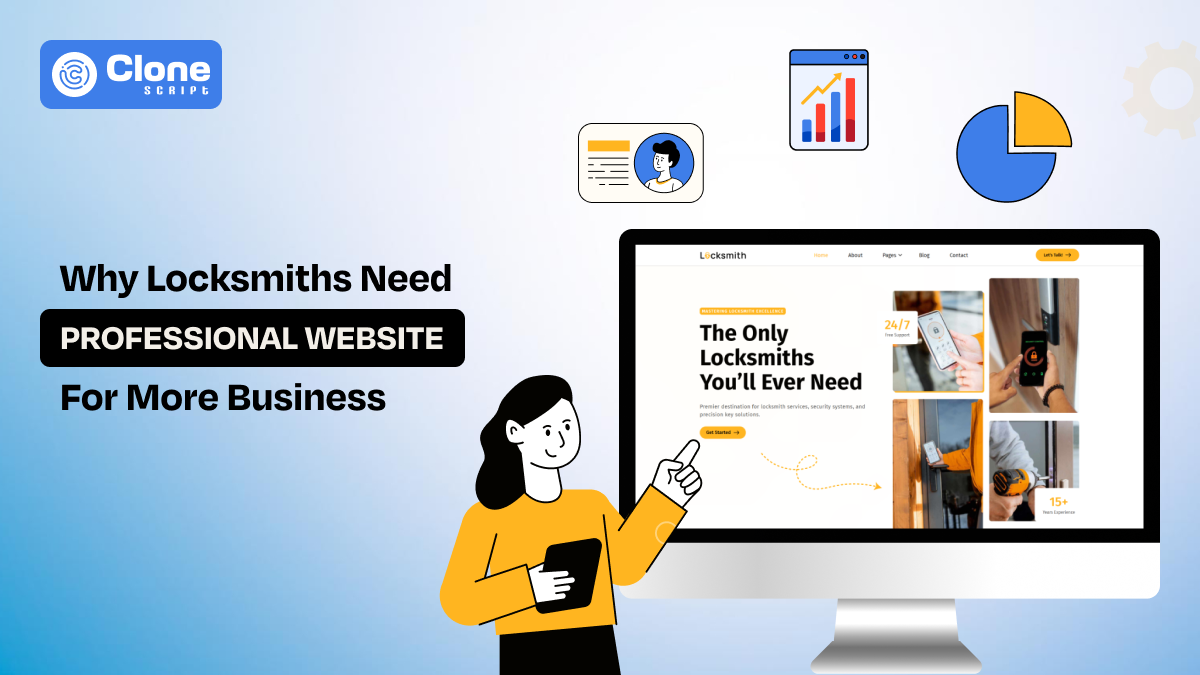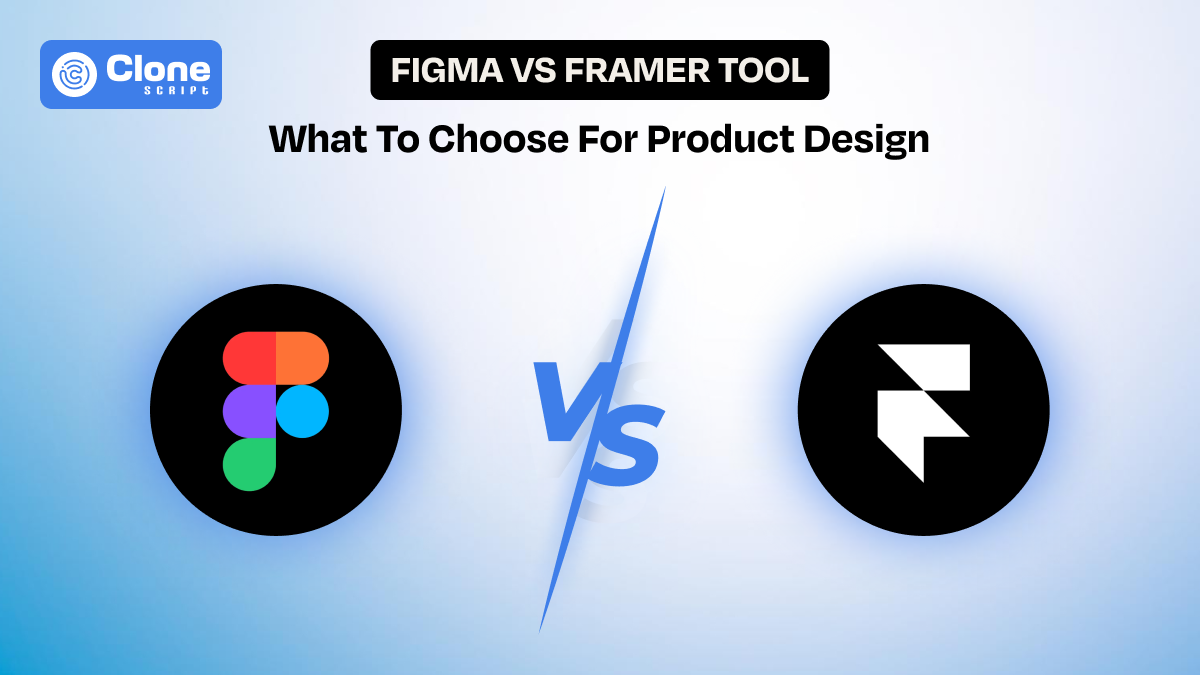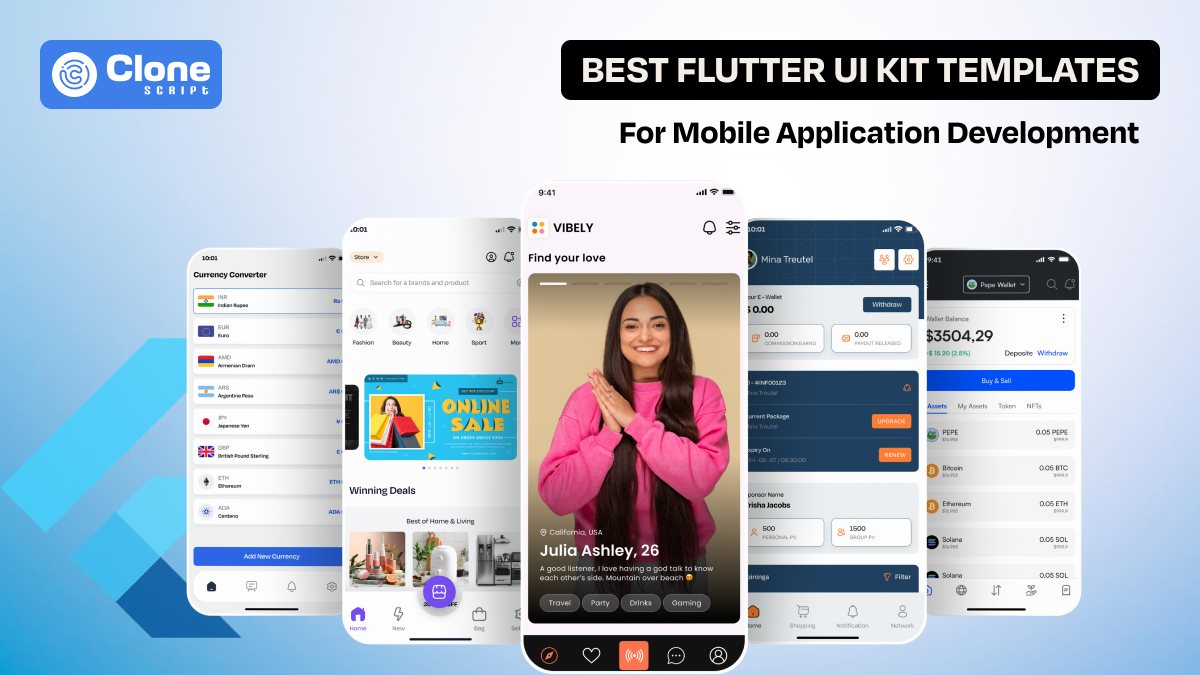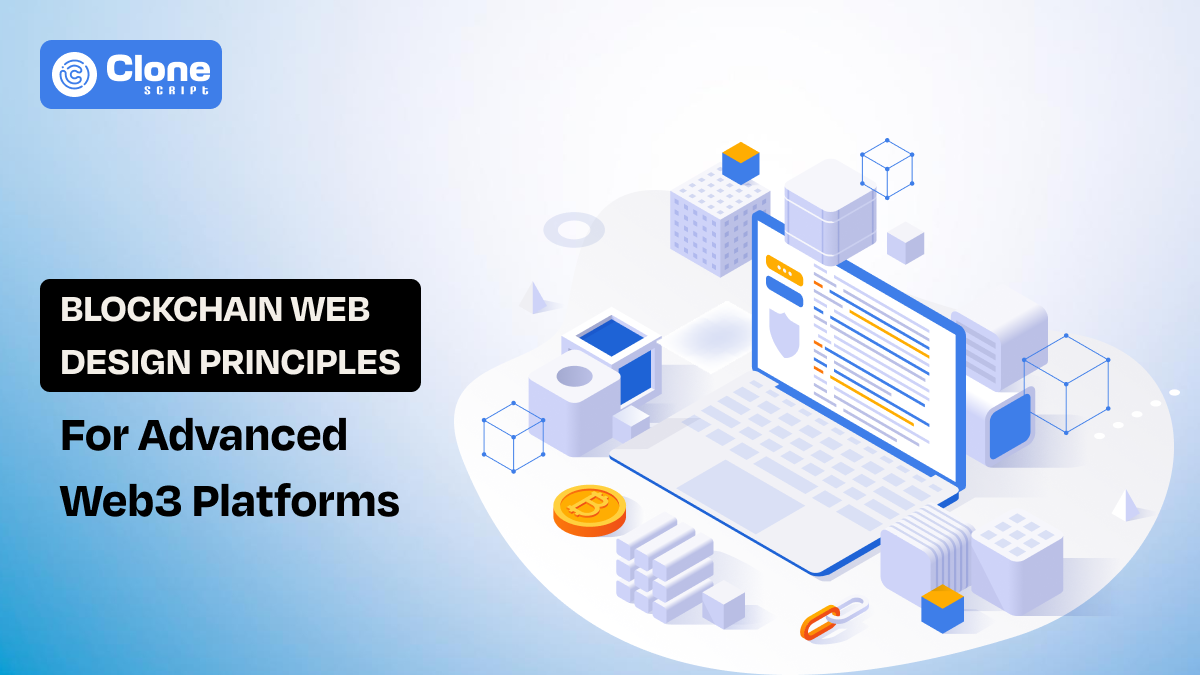10 Core Features That Drive Engagement in NFT Marketplace Apps
In a world where digital collectibles are redefining ownership, NFT marketplaces have become the main element of the Web3 economy. The success stories of platforms like OpenSea, Blur, and Magic Eden show how connecting strong technology with an engaging user experience can create billion-dollar ecosystems.
But here’s the truth: building an NFT marketplace isn’t just about integrating blockchain. It’s about crafting an experience that keeps users coming back — whether they’re creators minting digital art or collectors hunting for rare finds.
In this article, we’ll explore the core NFT marketplace features that make apps engaging, how they impact user retention, and why a well-structured feature strategy is essential for success.
Key Insights for NFT Marketplace App
Find the relevant and well-researched insights for the NFT app:
-
Platforms that implemented lazy minting witnessed a 52% rise in creator participation. (MindDeft’s 2025 report)
-
34% of new NFT users abandon sign-up due to wallet confusion (A 2024 Chainalysis study)
-
Apps using personalized alerts achieved 28% higher user retention than those without them. (2025 DappRadar report)
-
A 40% increase in secondary sales and longer average session times occurred due to AI-driven personalization. (2025 DappRadar survey)
-
37% higher daily engagement and greater organic growth have been reported with the built-in social tools experienced. (NASSCOM’s 2025 Web3 report)
-
Blur’s 2024 “Bidding Rewards” program noticed a trading volume of over 200% within weeks for activity-based participation.
-
35% higher retention rate and nearly 50% lower churn were identified in the marketplaces integrating loyalty programs. (Bain & Company’s 2025 Web3 engagement report)
-
45% higher NFT listings and increased platform loyalty with the creator-focused tools. (2025 NASSCOM study)
-
50% faster user adoption and higher transaction frequency compared to single-chain platforms, just because of multi-chain support. (Rain Infotech 2025)
-
45% reduction in fraud and significantly higher user trust have been reported with the transparent ownership histories and secure trading mechanisms. (W3Villa’s 2025 analysis)
-
30% increase in repeat transactions and higher user satisfaction scores noted in the marketplaces using advanced analytics. (DappRadar 2025)
Why Top-notch Features Matter in NFT Marketplace Apps?
When business owners plan to build an NFT marketplace, they often start with blockchain selection or monetization. But what truly differentiates a leading platform from a struggling one is the feature experience.
The global NFT market is expected to reach $78 billion by 2028, according to MarketsandMarkets. Yet, a majority of NFT apps fail to sustain activity after launch.
Why?
Because they focus on launching fast, not on building value through engagement.
A well-designed NFT marketplace combines:
-
Ease of use: Simple navigation for new users keeps the platform's usability maximum.
-
Personalization: Tailored content to keep users active and offer them what they’re interested in doing.
-
Interactivity: Features that encourage creator–collector connections. To make Web3 more accessible across the globe, it becomes helpful.
-
Trust: Security and transparency in transactions are powered by blockchain. There is no manipulation work even to change any details in the smart contract.
Every feature should have a purpose — to make the platform sticky. Just like e-commerce platforms use wishlist reminders and one-click checkouts to improve retention, NFT marketplaces must use the right set of tools to keep users immersed.
Want to know how it helps?
For example, OpenSea’s smart search filters, lazy minting, and profile customization helped it build a loyal community early on. In 2024, they contributed to over 70% repeat user engagement within 90 days.
If you’re building your own platform, the goal isn’t to replicate OpenSea. It’s to build an NFT marketplace app with distinct engagement-driven features that align with your niche and audience.
Why Engagement Defines NFT Marketplace App Success?
In digital marketplaces, traffic is easy to buy; engagement is earned.
Engagement isn’t just a vanity metric. It is what turns users into community members and community members into promoters. When users frequently interact — by liking, bidding, minting, or commenting — they create a self-sustaining ecosystem.
-
A 2025 DappRadar report highlighted that NFT platforms with community and engagement layers saw 2.4x higher trading volume than those offering only basic trading features.
So what does engagement look like in an NFT app?
-
Session frequency: This metric shows how often users open your app. If it shows a drop in 3 days, then identify what causes prevent them from taking action, like bidding and purchasing NFT.
-
Community participation: This metric is useful to know in-app discussions, creator follows, and likes. From there, you can take further steps to improve the app usage rate.
-
Retention rate: The retention rate is very important to know if users are coming back or just casually use the app once. If they are returning after 7 or 30 days, restructure the marketing strategies.
-
Transaction recurrence: This metric can show how frequently users buy or sell NFTs. From there, you can understand what kind of digital assets are traded across the platform.
In short, building engagement starts with empathy. Business owners need to ask: “How can we make our users feel involved, informed, and rewarded?”
That question shapes the design, functionality, and marketing of every successful NFT marketplace.
Top 10 Core Features NFT Marketplace Apps Must Have
Let’s explore the top 10 features of NFT marketplace apps, based on market trends, UX benchmarks, and user psychology.
1. Smooth User Onboarding and Wallet Integration
First impressions define everything. A confusing sign-up process or poor wallet integration can push users away instantly. Solving this with intuitive steps, progress bars, and multi-wallet compatibility can drastically boost conversions.
The best NFT marketplace design focuses on a frictionless onboarding experience:
-
Allow login via Web3 wallets like MetaMask or WalletConnect. There a no traditional centralized sign-up methods that are exposed to vulnerabilities.
-
Provide guest browsing before wallet connection. If someone just wants to explore the marketplace without registering their account, private browsing keeps the usability at the top level.
-
Add interactive tutorials to explain features. This can be helpful for users who are not familiar with the Web3 space but want to own digital assets with minimal effort.
Still, you want a fact to prove that the UX-optimized web design in the NFT platform generates the results? Here’s the one.
Your marketplace should also ensure secure wallet handling and transparent connection permissions — a key trust factor for first-time Web3 users.
2. Seamless NFT Minting and Listing Experience
Creators are the foundation of any successful NFT marketplace, and making a smooth minting process directly impacts engagement and retention. Complicated procedures can discourage creators, while simplicity encourages participation and loyalty.
In essence, minting should feel effortless and enjoyable — similar to uploading content on social media, not like writing complex code.
Your NFT trading platform should support the following:
-
Lazy Minting: From this feature, NFTs are minted only after a purchase, minimizing upfront gas fees and increasing accessibility.
-
Metadata Editing: It allows creators to update or refine artwork details before final listing for flexibility. This kind of facility encourages them to list more assets for selling.
-
Bulk Minting: It is ideal for launching entire NFT collections quickly and efficiently. From here, the frequent listing work can be optimized smartly.
-
Real-Time Previews: Provide creators with visual confirmation of how NFTs will appear post-minting. To make necessary changes, it becomes easy.
-
Gas Fee Estimation: Offer transparent insights into costs to enhance trust and confidence. With this feature, they can decide is listing the NFT is profitable after paying the fees.
3. Personalized Recommendations
Personalization is one of the most powerful ways to boost NFT app engagement and user satisfaction. With thousands of digital assets available, users can easily feel overwhelmed. A smart recommendation engine helps them discover NFTs they actually care about — increasing both retention and sales.
Your NFT marketplace should leverage AI and data analytics to personalize user experiences through:
-
Behavioral Insights: Analyze browsing patterns, previous purchases, and wishlist data.
-
Creator Preferences: Highlight NFTs from artists or collections that users follow.
-
Trending and Similar NFTs: Suggest assets based on community interest and stylistic similarity.
-
Dynamic Home Feeds: Continuously adapt featured NFTs according to real-time activity and preferences.
Platforms like OpenSea and Rarible already employ recommendation systems that mimic Netflix-style algorithms. It boosts user interaction by surfacing relevant collections.
4. Interactive Social Features
Community interaction fuels platform growth in the digital economy. NFT platforms are no exception. Integrating social features for NFT marketplace apps transforms them from simple trading websites into vibrant ecosystems where creators and collectors connect, collaborate, and engage.
Your marketplace should include:
-
User Profiles: Allow creators and collectors to showcase portfolios, bios, and achievements.
-
Follow and Connect Options: Let users follow favorite artists and receive updates about new drops or bids.
-
Comments and Likes: Encourage engagement and feedback under each NFT listing.
-
Activity Feeds: Display recent purchases, bids, or collection launches for social visibility.
-
Social Sharing Tools: Enable users to share NFTs directly on Twitter (X), Instagram, or Discord to attract external audiences.
These features help build trust, authenticity, and emotional connection, transforming transactions into relationships. It evolves into a social destination where art, culture, and ownership meet. This approach encourages repeat visits and word-of-mouth promotion, the strongest driver of long-term user retention.
5. Real-Time Notifications and Alerts
Timely communication is key to maintaining NFT marketplace engagement. In a fast-paced ecosystem where auctions, bids, and drops happen instantly, users need real-time updates to stay involved. Without proper alerts, even your most active members can miss crucial opportunities that lead to disengagement and lost sales.
Your app should offer:
-
Push Notifications: Instant alerts for new bids, purchases, or offers.
-
Drop Reminders: Notify users before upcoming NFT launches or auctions.
-
Price Alerts: Allow users to set alerts for floor price changes or specific NFT listings.
-
Creator Updates: Inform followers when their favorite artist releases new content.
-
Custom Notification Settings: Let users choose what types of updates they want to receive.
Real-time notifications enhance the sense of participation and urgency. Integrating smart alerts not only improves user experience but also drives marketplace liquidity, encouraging users to act faster, bid more often, and stay engaged longer.
6. Gamification
Gamification has become one of the most effective strategies for enhancing NFT app engagement. By integrating game-like mechanics into your marketplace, you turn everyday interactions — like buying, selling, or collecting NFTs into rewarding and enjoyable experiences.
Your platform can incorporate:
-
Achievement Badges: Reward users for milestones such as first NFT purchase, top creator, or completing collection sets.
-
Leaderboards: Display rankings for active traders or creators to inspire competition.
-
Daily or Weekly Challenges: Encourage users to complete tasks (e.g., “List 3 NFTs this week”) to earn rewards.
-
XP Points or Tokens: Offer loyalty points redeemable for marketplace perks, discounts, or exclusive NFTs.
-
Seasonal Events: Host themed drops or limited-time missions to sustain engagement.
Gamification encourages participation, consistency, and fun — three essential elements for user retention.
When designed thoughtfully, gamification transforms your marketplace from a transactional platform into an interactive playground. It motivates users to explore more, engage daily, and compete healthily — turning engagement into a natural part of their NFT journey rather than an obligation.
7. Loyalty Program
A well-structured loyalty program strengthens long-term user retention on NFT marketplaces by rewarding consistent engagement and incentivizing repeat actions. Beyond gamification, loyalty programs create a sense of value and belonging, turning casual users into loyal collectors and brand advocates.
Key elements to include:
-
Token-Based Rewards: Issue platform-specific tokens for actions like listing, buying, or sharing NFTs.
-
Tiered Memberships: Offer levels such as Bronze, Silver, or Gold, unlocking exclusive perks and access.
-
Discounts and Fee Waivers: Reduce transaction or minting fees for loyal users.
-
Exclusive Drops and Early Access: Give priority to high-engagement users for rare collections or auctions.
-
Referral Rewards: Encourage users to invite friends with tangible benefits.
A successful loyalty system aligns user incentives with organic marketplace growth. By rewarding active participation, you encourage a committed community that not only continues trading but also promotes your platform organically. Ultimately, loyalty programs help create a self-sustaining ecosystem where collectors and creators feel appreciated, connected, and motivated to return.
8. Creator-Centric Features
Creators are the leaders of any NFT marketplace. Without them, the platform would not have content, engagement, and long-term growth. To attract and retain top talent, your marketplace must offer creator-centric features that help artists streamline processes and reward creativity.
Key features to include:
-
Automated Royalty Management: Enable creators to earn royalties on every secondary sale automatically for fair compensation.
-
Analytics Dashboard: It provides insights into NFT performance, sales trends, and audience demographics to inform strategy.
-
Collaboration Tools: This allows multiple creators to co-create collections, share revenue, and cross-promote content.
-
Direct Fan Interaction: To enhance communication, integrate messaging, Q&A, or community engagement tools to connect with collectors.
-
Content Management: It helps creators easily update, organize, and showcase their NFT portfolios.
Platforms that prioritize creators see higher engagement, as artists are more likely to bring their audiences along.
By putting creators first, your marketplace increases innovation, diversity, and a successful community. When creators feel supported, collectors benefit from richer content, and the platform itself grows organically, running the ecosystem’s sustainability and value.
9. Cross-Chain Support and Fast Transactions
In the evolving NFT ecosystem, users demand flexibility, speed, and cost efficiency. Cross-chain support in NFT marketplace addresses this need by allowing transactions across multiple blockchains, expanding accessibility, and reducing friction.
Key advantages and features include:
-
Multi-Blockchain Integration: Support Ethereum, Polygon, Solana, Avalanche, and Binance Smart Chain for broader reach.
-
Interoperable NFTs: Enable assets to move or be traded across chains seamlessly.
-
Reduced Transaction Fees: Offer users options on lower-fee blockchains to increase adoption.
-
Faster Settlements: Optimize transaction speed for bidding, minting, and transfers.
-
Scalable Architecture: Analyze how the marketplace handles high-volume activity without latency issues.
Cross-chain functionality not only attracts a wider audience but also increases liquidity, so your platform becomes more vibrant and competitive.
Cross-chain capability with fast transaction execution makes your NFT marketplace enjoyable for users to experience a smooth, efficient process. This reduces barriers for collectors and creators, enhances trust, and positions your platform as a modern, versatile hub in the competitive NFT market.
10. Secure Trading and Transparent Ownership
Trust is the foundation of any successful NFT marketplace platform. Users need confidence that their assets are secure, ownership is verifiable, and transactions are transparent. Without these assurances, even the most feature-rich platform will struggle to retain users.
Key security and transparency features include:
-
Smart Contract Audits: Regular audits to ensure contracts are free from vulnerabilities.
-
Escrow-Based Trading: Funds and NFTs are held securely until transaction completion.
-
Ownership Provenance: Display the complete history of each NFT, including previous owners and transaction dates.
-
Two-Factor Authentication (2FA): Adds an extra layer of account security for buyers and sellers.
-
Encrypted Transactions: Protect sensitive data and prevent unauthorized access.
By implementing robust security measures, your marketplace not only safeguards assets but also enhances credibility among collectors and creators. Transparent ownership and secure trading keep confidence at the top, which directly drives engagement, repeat transactions, and long-term loyalty.
In the NFT ecosystem, security isn’t just a feature — it’s a competitive advantage that keeps users active and invested.
Role of Analytics and Insights for Continuous Engagement
Data-driven decision-making is essential for sustaining NFT marketplace engagement. Analytics provide insights into user behavior, market trends, and platform performance. From there, business owners can optimize features and enhance the overall experience. For NFT trading platform monetization, these statistics are very important to have.
Key areas where analytics improve engagement include:
-
User Activity Tracking: Monitor logins, purchases, bids, and listing frequency to identify active and dormant users.
-
NFT Performance Metrics: Analyze which collections, creators, or categories generate the most interest and sales.
-
Retention Analysis: Understand how users usually return and what actions keep them engaged.
-
Predictive Insights: Anticipate user churn, recommend personalized content, and schedule notifications or promotions.
-
Marketing Optimization: Evaluate the effectiveness of campaigns, drops, or referral programs.
By integrating real-time analytics, your NFT marketplace grows alongside its users. Continuous insights allow for personalized recommendations, targeted engagement strategies, and improved retention. This can change raw data into actionable strategies that drive long-term growth and loyalty.
How AllClone Script’s White-Label Solution Enhances Feature-Rich NFT Marketplaces?
When building an NFT marketplace, integrating all the core features that drive engagement in NFT marketplace apps can be challenging, time-consuming, and expensive. A white-label solution like AllClone Script’s NFT Mobile App (Swift UI) allows business owners to launch a feature-rich platform quickly, without compromising on user experience or functionality.
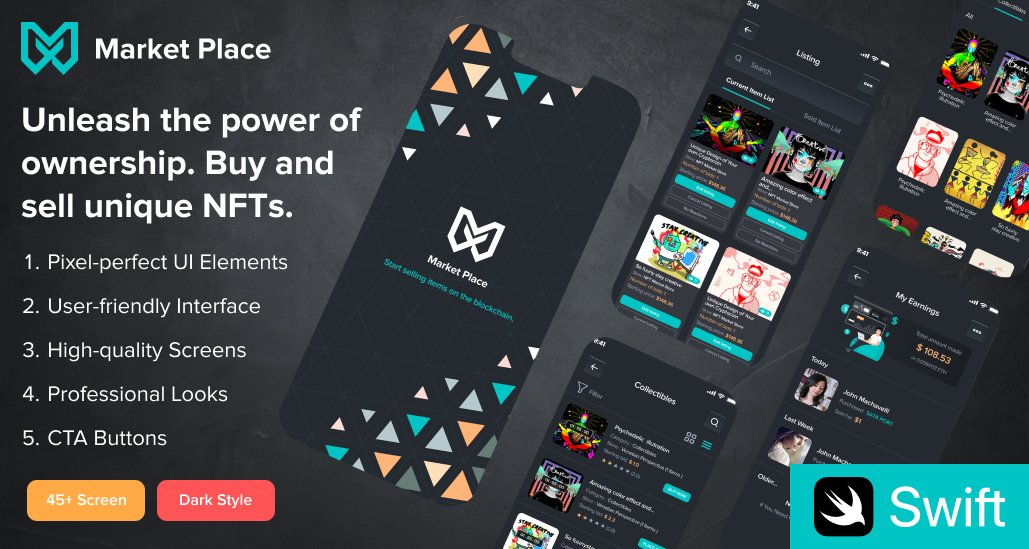
With this solution, key feature-driven advantages include:
-
Pre-Built Core Features: Wallet integration, NFT minting, real-time notifications, and social engagement tools are ready to deploy.
-
Customizable UX/UI: Align the marketplace design with mobile UX best practices for NFT marketplace apps, enhancing usability and engagement.
-
Cross-Chain Support: Enable transactions across Ethereum, Polygon, Solana, and more, expanding user access and flexibility.
-
Creator-Centric Tools: Dashboards, analytics, and royalty management help artists to mint, list, and track NFTs effortlessly.
-
Gamification and Loyalty Features: Integrated badges, rewards, and tiered programs improve retention and encourage repeat activity.
-
Secure Trading: Smart contract integration, escrow-based transactions, and ownership transparency build trust and confidence.
By using this iOS-ready NFT marketplace app, business owners can focus on community growth, marketing, and engagement strategies while ensuring their platform delivers all essential features. This white-label approach helps your marketplace be competitive, engaging, and ready to attract creators and collectors from day one.
Conclusion
Creating a NFT marketplace is about more than technology — it’s about people, creativity, and connection. Features like seamless minting, personalized recommendations, social interactions, gamification, loyalty programs, and secure trading ensure users feel valued, engaged, and confident. By focusing on user-centric design and meaningful engagement, your marketplace becomes a space where communities grow, creators flourish, and users return again and again.
Using a white-label solution like AllClone Script’s NFT marketplace iOS app allows you to launch quickly without compromising on these essential experiences.
 BTC - Bitcoin
BTC - Bitcoin
 USDTERC20 - USDT ERC20
USDTERC20 - USDT ERC20
 ETH - Ethereum
ETH - Ethereum
 BNB - Binance
BNB - Binance
 BCH - Bitcoin Cash
BCH - Bitcoin Cash
 DOGE - Dogecoin
DOGE - Dogecoin
 TRX - TRON
TRX - TRON
 USDTTRC20 - USD TRC20
USDTTRC20 - USD TRC20
 LTC - LiteCoin
LTC - LiteCoin

